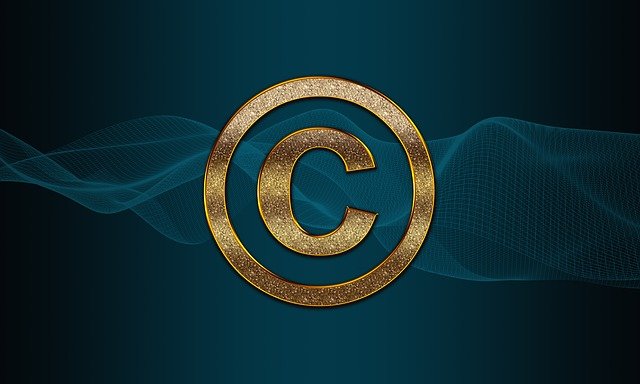
How to Manage and Organize Content for Blog Campaigns
HOW TO MANAGE AND ORGANIZE CONTENT FOR BLOG CAMPAIGNS
Launching a blog campaign is an effective way to grow your business’ influence online. By posting regularly, it allows you to provide value for your customers by educating them on specific topics. More than that, it establishes you as an expert in your field, which can draw more attention from potential customers or clients.
Indeed, blogging has proven to be a very effective tool for businesses, but there must be a method behind how you manage your blog posts. This is where the blog campaign comes into play.
Sort the Fine Details Before You Write
Before you jump into organizing or even writing the content for your blog campaign, start by sorting the fine details you want to include in your posts. Jumping directly into the writing process will lead to confusion, both for you and your readers.

People who know a lot about something often want to say a lot about something, which can lead to providing information in a very unorganized fashion. Preplanning helps you bring your thoughts together on specific topics so that you don’t forget anything, and so you can organize it into a system that helps others learn.
Start by working through themes for your campaign. For example, a technology company would want to teach customers about the latest technology on the market. This may take several blog posts to cover all of the information, such as:
- What the new technology is
- How different it is from other options
- Its history and how it became what it is
- How to use it or what it is used for
- Why customers should want it
- Specific things that only technology aficionados would know
- How to get the new technology
- Why they should get that technology from you
From this list alone, there are a lot of specific things to cover about this new technology that will be interesting to clients and help companies get a boost in sales. To get the most out of this content, it needs to be organized into a campaign that follows logical steps. That way, you can effectively educate clients while creating an effective sales funnel so both sides benefit.
Pro Tip: Make a List of Content Points for the Year
An easy way to organize your content is to make a list of content points that you need to address throughout the year. Some of these will be easily predictable, such as holidays or special events. Industry trade shows and similar events also make great content points to write about. Here are some content points that are commonly used to organize blog content:
- Industry-specific themes
- Specific products or promotions
- Product launches, sales, or other special events
- Major business changes like an expansion or merger
Develop Your CTA
One of the most important parts of your blog to develop is your CTA or Call-to-Action.
This is the part that asks the customer to do something, such as buy a product or schedule an appointment. It is usually found at the end of the blog post with links to landing pages or other sales resources.

The CTA is important because it takes a reader from being passive to being active and engaged with your company. Without it, your blog will not drive sales.
Creating a CTA does not have to be complicated, but it does require specific pieces of information. Before you create any content, create a CTA.
Information for Your CTA
There are specific pieces of information that need to be included in your CTA. Otherwise, it may not be effective at directing your potential customers. Your CTA needs to include:
- Your company name
- Company primary contact information
- An invitation to what you want customers to do (i.e., “call us” or “click this link”)
- A link to a landing page or the business home page
Once you have this information, you can compile a CTA using a basic formula for each blog post. This formula will change slightly based on the topic and where the post sits in your sales funnel.
If the post is about general information about the business or is early in the sales funnel or campaign, your CTA will focus on getting clients to your website or a specific landing page to learn more.
If it is deep enough in your sales funnel to ask for the sale, then the CTA should focus on getting clients to the sale through a product page or a landing page that asks for the sale.
Your CTA should follow a template and look like the following:
- Sentence 1: Introductory sentence to transition from content into CTA.
- Sentence 2: Sentence on how the product can be valuable to the consumer.
- Sentence 3: Request for a specific action, with contact info or link.
- Sentence 4: Sentence on how the company can support the consumer.
Example (Early Sales Funnel)
Replacing your outdated TV with a new 80-inch flat-screen will make watching the game more enjoyable, but taking your old TV to the dump can be a challenge. It is much easier if you can find a service to pick up your TV and take it to the landfill for you. [Company Name] can help you get that old TV to the dump without you having to lift a finger except to call us at [company phone number]. Let us help you make every game special by making it easy to install your new TV.
Example (Late Sales Funnel)
Replacing a broken TV shouldn’t be a hassle, but large TVs are hard to get rid of. You want to order a new TV to watch the game with your friends, but your old TV Is standing in your way. Call [Company Name] at [phone number] to get that old TV out of the way. We’ll drag your old TV to the dump and let you enjoy your new TV without getting off of the couch.
Organize Content by Relevance
Once you know what your content will be about, put it in order of relevance for the goals of the campaign and the subject matter. There are several ways to organize your content by relevance.
Relevance to the Reader
Your content should be in the order of relevance to the reader if there are multiple subjects or the content becomes progressively more complicated. This is common on education websites where the content starts basic and becomes more complicated over time.
However, it is not always that straightforward since some parts make sense to go out of order. Businesses use this method when introducing multiple products or services. They may introduce them as a whole so that customers have a frame of reference for all of the options, then start to go through them individually.
Relevance to Time
Content can be organized based on chronological events.

History classes do this so that everything develops in a logical progression.
And companies use this when they are guiding readers through tutorials.
Every post builds on the one that came before it, so doing them out of order does not make sense for the reader.
Relevance to Topic
Another way to organize content is to organize by topic. This works best when the blog posts may seemingly have nothing to do with each other.
For example, writing blog posts about bananas, oranges, and apples that do not compare them means that each post has nothing to do with each other. However, you can combine the posts into a campaign that teaches readers about different kinds of fruit to make them better shoppers at grocery stores.
Group content based on your themes so that content related to a topic is treated in a single series of blog posts.
Build a Storyline
Having a method for organizing your content helps you get a feel for what posts need to go where and when, but that is not the end of the process. Once you have an idea of how to group your content, you need to organize it so that it builds a storyline.
For the most part, consumers do not make a purchase based on the technical specifications of a product. They don’t even buy because a product solves a problem for them. They buy because they connect with the narrative of that product.
You can use this to connect with readers and make asking for the sale more effective.
For this to work, every piece of content in the campaign must support a narrative in some way. Instead of focusing entirely on features, talk about how the product was developed and why customers enjoy it. Paint a picture of how customers can use it to make their lives better.
Once they can imagine using your product to resolve a pressing need for them, they are beginning to buy into the storyline.
It is important to remember that although the posts are working toward a common goal, every piece must be able to stand on its own.
Every blog post is a self-contained story of its own, and you want to make sure that customers get a good understanding of what you are writing about, even without access to other posts.
That way, readers can keep up with what you are writing without having to read back through old posts for everything to make sense.

Develop a Simple Tracking System
As you launch the campaign, it is important that you track the success of each post. Without a tracking system in place, you won’t be able to effectively evaluate your campaign strategy.
The good news is that your tracking system does not have to be complicated. A simple system could be to track KPIs on every post to see which ones perform the best.
If you have posts that do well and others that do not, figure out what makes some perform well and change your process to make the others more effective.
Try Different Campaign Strategies
Campaign strategies can always be changed to fit your needs. If you try to develop a successful campaign and don’t get the results that you want, pivot and find a strategy that works. You can try as many strategies as you like until you find the one that works best.
Successful companies make sure they can track the performance of their posts in a meaningful way. When they find a specific element of a post that works, they integrate it into their strategy and apply it to every post.
Even if you only get one thing that works out of your campaign, that is an improvement. Collect these little improvements and you will eventually create a campaign strategy that works reliably. All it takes is effort over time and a desire to consistently make improvements.
The Content Publishing Storyline
Every blog post campaign needs to tell a story. Customers buy based on the narrative of a product more than any other factor, and this is your key to making more sales.
For help building your campaign storyline, just use this helpful checklist.
Related Content
- 0 Comment
Subscribe to Newsletter
- How Can SharePoint Be Used To Organize and Disseminate SOPs?
- Planning the Perfect Genealogy Research Trip: A Step-by-Step Guide
- From Silly to Awesome: How Words Change Meaning Over Time
- The Psychology of Font Choice: How Typography Impacts Content Engagement
- How to Distribute SOPs for Maximum Usability





